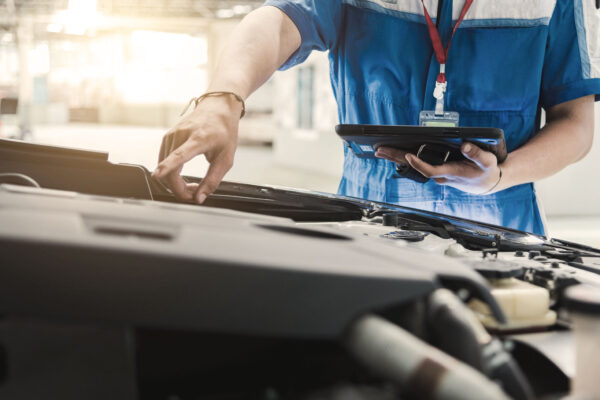If you’ve been paying close attention to the automotive market lately, specifically the electric vehicle market, you will have noticed that OEMs are beginning to invest in battery production as a critical component of their overall electric vehicle transition. Most notably, they are doing so within their own borders. This begs the question: Why would OEMs start investing in battery production in the United States?
Taking Hold of a Runaway Supply Chain
Currently, China dominates the global battery chain in minerals, processing, and mining at about 75%-80% of the overall market. At the same time, OPEC controls 40% of oil and yields major influence on the U.S. economy. As you can imagine, our reliance on other countries for battery production and oil supply is a difficult spot to be in as supply chain complexity and disruptions continue to cause problems for automotive companies. Also, one could argue that China controlling over 80% of the supply chain is not exactly helping the environment on a global stage – especially due to China’s need for open coal mines to create the lithium batteries.
Automotive OEMs are trying to build their own batteries here in the United States to gain greater control over the supply chain and reduce the costs of EV production, driving lower costs for their consumers. These efforts will also create jobs in the United States around battery manufacturing and distribution. The ripple effect will be essential as EV penetration continues to rise in the United States, although it also opens a whole new area of regulatory compliance with batteries which was not as big of a factor when EV penetration was much lower.
How Do We Solve the “Dead” Battery Issue?
For those who are hesitant about EVs due to concerns with how they will handle a dead battery, there are solutions to battery recycling that we should consider. Dealers and OEMs can improve EV adoption by educating drivers about how EV batteries work, what they can expect from servicing their vehicle, and what happens to batteries once they no longer work in the car.
As the first generation of EV batteries come to the end of their projected 10-year life cycle, most retain around 70%-80% of their capacity. While manufacturers recommend that these are replaced in vehicles due to the workload that they face in powering passenger vehicles and reducing returns for range, these batteries still offer a wealth of capacity. To avoid the significant environmental impact of dumping batteries, we can recycle them by using them to store solar energy for homes, power streetlights, and as back-up power sources for elevators or data centers. Of course, this recycling creates a need for regulations and compliance to ensure tracking of battery history, transfer of ownership, and regulations for different regions.
What Can OEMs Do to Manage Changing Battery Regulations?
I would recommend a BEV (battery electric vehicles) checklist for regulations ensuring that OEMs are keeping track of the ever-changing requirements.
- Familiarize yourself with all applicable regulations and standards: Various regulations and standards related to electric mobility have been introduced to address environmental impact, product safety, and reliability.
- Perform an internal assessment for battery compliance: One of the best ways to prepare for an upcoming audit is to conduct an internal assessment using either your own team members or an external third-party auditor. A self-assessment enables you to gauge your organization’s compliance readiness and identify any gaps that need to be addressed prior to the actual certification process.
- Develop an action plan for battery compliance: Based on the findings from your internal assessment, develop an action plan for implementing the necessary changes to help your organization reach compliance. When assigning tasks and due dates to impacted teams, consider the date of your formal audit.
- Compile your product record and history: By bringing together the key elements of your product record which includes bills of materials (BOMs), corrective and preventive actions (CAPAs), SOPs (Standard Operating Procedures), requirements, training documentation, and engineering change orders (ECOs) in a centralized system, you will always have the necessary evidence at hand to demonstrate compliance.
- Leverage a digital solution to manage compliance: Managing regulatory information in context with the product record makes it easy for your teams to track key deliverables and quickly address compliance issues that could hinder product launches.
Regulatory battery compliance cannot be an afterthought for OEMs manufacturing EVs and batteries. If they want to win the race in today’s volatile and competitive EV market, there are opportunities to jump out in front and overcome barriers to EV sales. Implementing the right systems and processes early on will help you stay on top of the evolving industry mandates and minimize risks. This proactive approach to compliance will be key to accelerating your product launch and achieving commercialization success.
Perficient can help OEMs with their deep knowledge of the BEV industry and operational readiness. Our automotive expertise and continued success in standing up platforms and systems will support battery production and regulatory compliance so that OEMs can take control of the EV supply chain and reduce costs of the EVs to consumers.
Tap into Perficient’s automotive expertise to accelerate your electric vehicle sales and help you with your regulatory and compliance needs.

